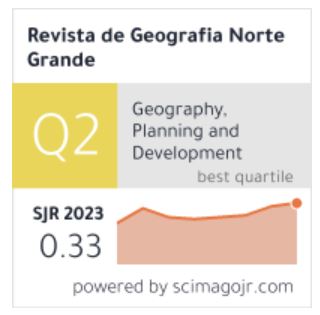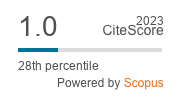maps on social networks: a case study of the Viral Cartography project on Facebook and Instagram
Keywords:
viral maps, fake news, Graphic design, Interaction, Social mediaAbstract
Viral maps have gained significant space on social networks today. They enhanced the rapid and ephemeral dissemination of information. Understanding this dynamic is essential for geographers, as it refers to new perspectives regarding graphic semiology and the production of cartographic content. This research perspective, still open, has great potential for theoretical, methodological and practical discussion in the short and medium terms. Thus, the objective of this article is (i) to evaluate the level of interaction of posts with maps and without maps on 4 Facebook and Instagram pages and to compare the results with the content posted by the Viral Cartography page; (ii) compare audience interaction with posts considering the two social media platforms; (iii) to evaluate the potential for social engagement of 5 maps that dealt with issues that were in high demand in the media. This work has a qualitative and quantitative character in which likes, reactions, shares and comments on posts are evaluated. We concluded with the analyzes undertaken that viral maps are efficient and expanding tools for the propagation of (dis) information. Although ephemeral, they have significant implications for the interpretation of content and the formation of opinions. Thus, this field of investigation becomes very relevant and necessary for contemporaneity..
Downloads
References
BERGER, J., & MILKMAN, K. L. Emotion and virality: What makes online content go viral? GfK Marketing Intelligence Review, 2013, Vol. 5. doi: https://doi.org/10.2478/gfkmir-2014-0022
GOEL, S., A. ANDERSON, J. HOFMAN, D. J. WATTS. The Structural Virality of Online Diffusion. Management Science, 2016, Vol. 62, N° 1. doi: https://doi.org/10.1287/mnsc.2015.2158
GRIFFIN, A. L. Trustworthy maps. Journal Of Spatial Information Science, 2020, N° 20. doi: doi:10.5311/JOSIS.2020.20.654
JOHN N. A. Sharing and Web 2.0: The emergence of a keyword. New Media & Society, 2012, Vol. 15. doi: https://doi.org/10.1177/1461444812450684
KATONA, Z., ZUBCSEK, P. P. & SARVARY, M. Network effects and personal influences: The diffusion of an online social network. Journal of Marketing Research, 2011, Vol. 48. doi: https://doi.org/10.1509/jmkr.48.3.425
KENT, A. Trust Me, I'm a Cartographer: Post-truth and the Problem of Acritical Cartography. The Cartographic Journal, 2017, Vol. 54, N° 3. doi: https://doi.org/10.1080/00087041.2017.1376489
LAZER, J. Studying human attention on the Internet. PNAS, 2020, Vol. 117, N° 1, 2020. doi: https://doi.org/10.1073/pnas.1919348117
MUEHLENHAUS, I. Going viral: The look of online persuasive maps. Cartographica. The International Journal for Geographic Information and Geovisualization, 2014, Vol. 49, N° 1. doi: muse.jhu.edu/article/542103
NIEŚCIORUK, K. Like it! Maps as a Subject and a Springboard for discussion in social media. Polish Cartographical Review, 2020, Vol. 52, N° 2. doi: https://doi.org/10.2478/pcr-2020-0005
ROBINSON, A. C. Elements of Viral Cartography. Cartography and Geographic Information Science, 2019, Vol 46. doi: https://doi.org/10.1080/15230406.2018.1484304
SHANNON, J. & WALKER, K. E. Ventures into Viral Cartography: Waffle House, Educational Attainment, and the Social Life of Maps. The Professional Geographer, 2020, Vol. 72. doi: https://doi.org/10.1080/00330124.2019.1653774
WANG, Q.; MIAO, F.; TAYI, G.K. & XIE, E. What makes online content viral? The contingent effects of hub users versus non–hub users on social media platforms. Journal of the Academy of Marketing Sciente, 2019, Vol. 47. doi: https://doi.org/10.1007/s11747-019-00678-2
Downloads
Published
How to Cite
Issue
Section
License
Copyright (c) 2022 Revista de Geografía Norte Grande

This work is licensed under a Creative Commons Attribution 4.0 International License.






